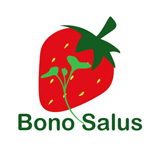Hey my friends! It has been long, first, my apologies, I could not connect with you for almost a week because of the tight schedule I had. Please forgive me.
I missed blogging but anyway, I am back, not only back but back with another source of nutritious food which is readily available and found in arable lands especially here in Africa.
What can this be, I know you are asking me questions and today I do not want guess work, so let me get straight into the topic.
JUTE.
We used to sustainably gather this from the forest. Whenever the first rains fall, I always think of this weed. In Zimbabwe it naturally grows in summer and does not need any special attention. As long as rains are pouring religiously you are assured of a continuous supply.
I know you now want to know which part of the jute plant is edible.
No Problem, let’s go!
The tender leaves, flowers and tender pods are all consumed. The leaves are best for me, I do not miss my summer, I have to visit the village only for this.
How do you cook the jute leaves, flowers and pods.
Those who stay in town who are a little bit informed do not cook these parts of the plant. They take the tender parts of the plant and toss in their salads. It’s good this way.
But others will stir fry and add it in their dishes. If you over stir fry, jute is slippery, I tell you, you will not like it especially if you are not Zimbabwean.
BuT Zimbabweans they like the slippery part of the jute leaves.
Today I would like to teach you how rural folks in Zimbabwe prepare their jute meal and how they use the cooked jute leaves as a relish.
The Zimbabwean traditional way if cooking jute leaves.
The most important thing needed is an agent that will break down the leaves into slippery component.
NB: jute is a substitute of okra in my country, so I am about to talk about is the same way that is used to prepare okra in a traditional way in Zimbabwe.
Ok, let me continue.
the agent that is needed is soda. But people are rarely using soda because they want to be healthful so they have resorted back to their traditional method of making an alkaline solution using residues from plants . People from my village use dried maize Cobbs to prepare their agent. Every region has its own way of preparing this liquid, I went to Nyanga, in Hwesa to be specific, in that area sorghum and millet is grown there therefore they use finger millet plant residues.
How To prepare the agent?
Gather your maize Cobbs that has been shelled and make sure they are dry.
Put them on a clean metal plate or sheet. Burn them until they are reduced to ashes.
Wait so that they become cold.
WheN They are cold place them in a cup filled half way with water, add some ashes up until only 2cm of water is on top of the ashes. Stir gently and leave to settle for about 30mins.
Strain the resulting liquid in a clean cup.
This brownish liquid is your agent that we are going to use to prepare our jute.
Lets cook our jute leaves now.
You need
- 2 cups of cold water
- 1 teaspoon of your prepared agent
- 1 teaspoon salt or more to taste
- 2cups of freshly picked jute leaves chopped
- One large tomato
- Shallots or any other onion cut into pieces
- A pot
- Wooden spoon
- With this method you do not need a lid
Now empty all the contents in a pot and put on stove top.
Allow this to come to boil, make sure you stir occasionally and beating the content.
Please do not go away put all your attention on the pot. If you are too experimental, experiment by going away for three minutes when the pot is now boiling and you will witness with your eyes what will happen, so I am not going to tell you what will happen, it’s your home work to find out,
Continue beating and stirring occasionally for 15 minutes, you will realise that your contents will become a very slippery porridge that is very delicious. The amount of water will determine the thickness of your output. At this stage make sure you have reduced the heat, even if I do not tell you to reduce your heat, there is something that will happen that will force you to reduce your heat.
This is how jute leaves are cooked in a traditional way in Zimbabwe. This way is also used to prepare okra in Zimbabwe.
If you hear a true Zimbabwean saying he is craving for okra, cook it this way , you will become his best friend. Frying okra and jute is contemporary and it’s not very popular with senior Citizens.
If you do not have any appetite please try jute leaves
Jute leaves are consumed together with Sadza(Zimbabwe’s Staple food).
There are vitamins, iron, magnesium and other minerals in jute.
Please try jute leaves for your good health.
When you hear the word jute, you think of of ropes, bags and sandals but try jute for food.
Bye for now!
